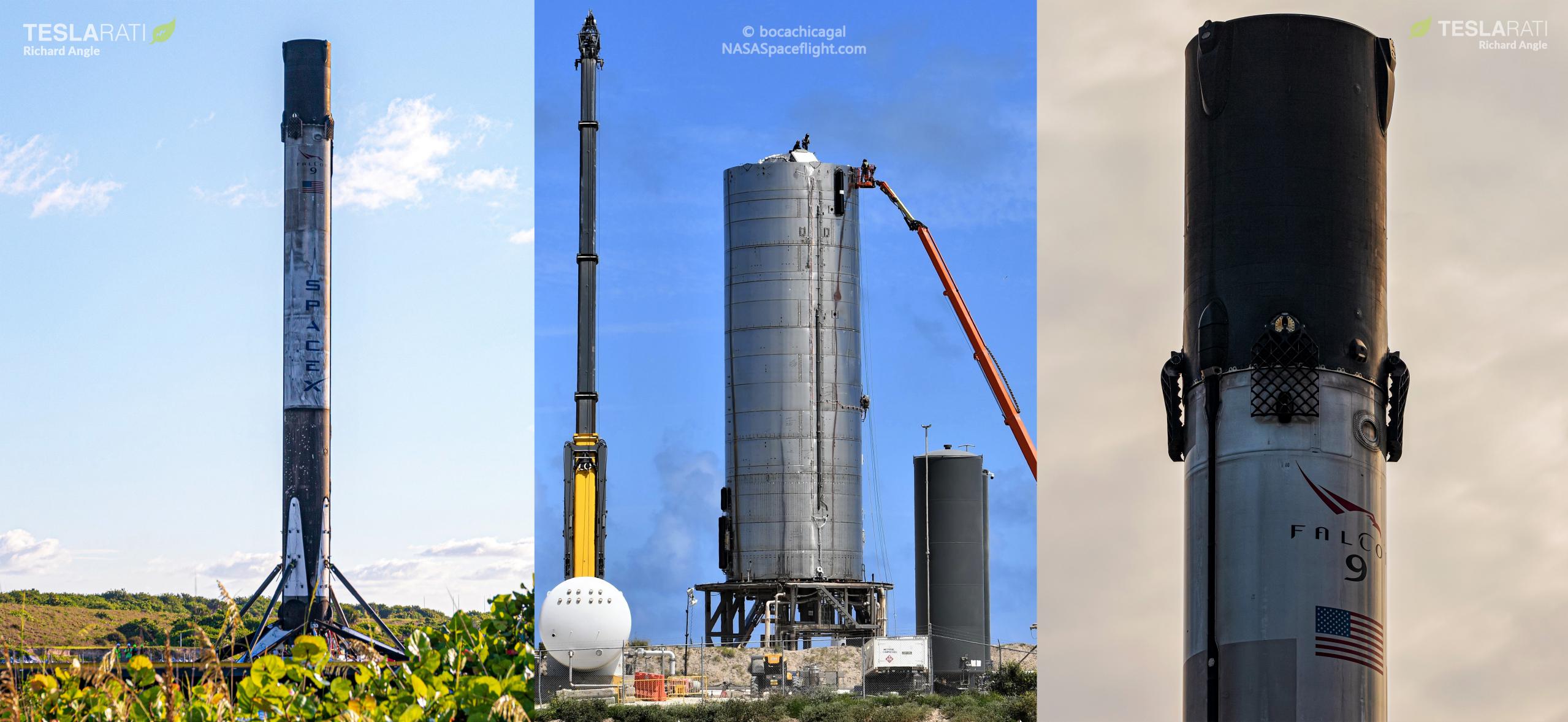
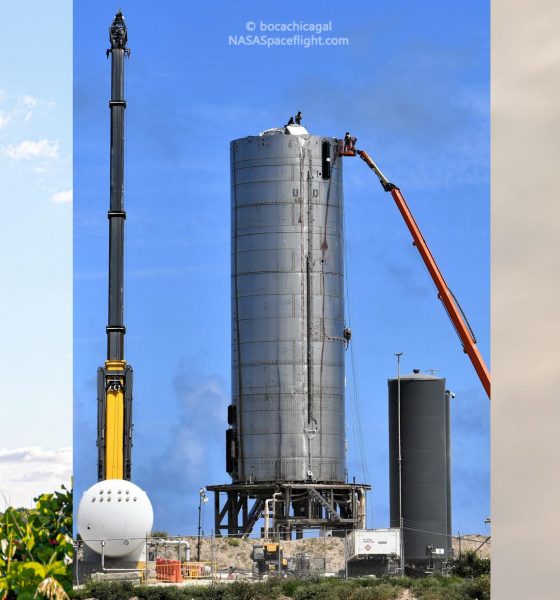
News
SpaceX eyes two Falcon 9 launches and a Starship hop in three days (Update: one day!)
Update: In a surprise twist, SpaceX has confirmed plans to launch SAOCOM 1B, Starlink-11, and hop Starship SN6 in less than ten hours on August 30th.
Contingent upon a ULA Delta IV Heavy launch on August 29th, Starlink-11 is scheduled to lift off on a Falcon 9 rocket no earlier than (NET) 10:12 am EDT (UTC-4), followed by SAOCOM 1B on a separate Falcon 9 NET 7:18 pm EDT (UTC-4). Simultaneously, SpaceX is currently working towards a second full-scale Starship hop test between 8 am and 8 pm CDT (UTC-5) on Sunday, August 30th.
Pending an August 29th mission from competitor ULA, SpaceX aims to attempt two orbital Falcon 9 launches and a Starship hop test over the course of just a few days.
A United Launch Alliance (ULA) Delta IV Heavy rocket was originally scheduled to launch the secretive National Reconnaissance Office 44 (NROL-44) spy satellite on Wednesday before the customer requested a 24-hour delay and technical rocket bugs pushed the mission to no earlier than (NET) August 27th and now August 29th. Delta IV Heavy’s low cadence of one or two annual launches has traditionally made it hard for the rocket to launch on time, offering very few opportunities for the company to work the kinks out of the complex system.
ULA’s NROL-44 launch currently holds precedence over other missions scheduled around the same time, meaning that SpaceX has no choice but to delay its own launches every time the ULA mission slips. SpaceX has two launches currently in queue: Argentinian Earth observation satellite SAOCOM 1B was scheduled to launch NET 7:19 pm EDT (UTC-4) on August 28th, while SpaceX’s 11th Starlink v1.0 launch was expected to lift off NET 10:08 am EDIT (UTC-4) on August 30th. Simultaneously, a SpaceX Starship prototype is tracking towards its first short hop somewhere in between those orbital launches. ULA’s second NROL-44 delay has thrown both SpaceX launch dates somewhat up in the air, however.
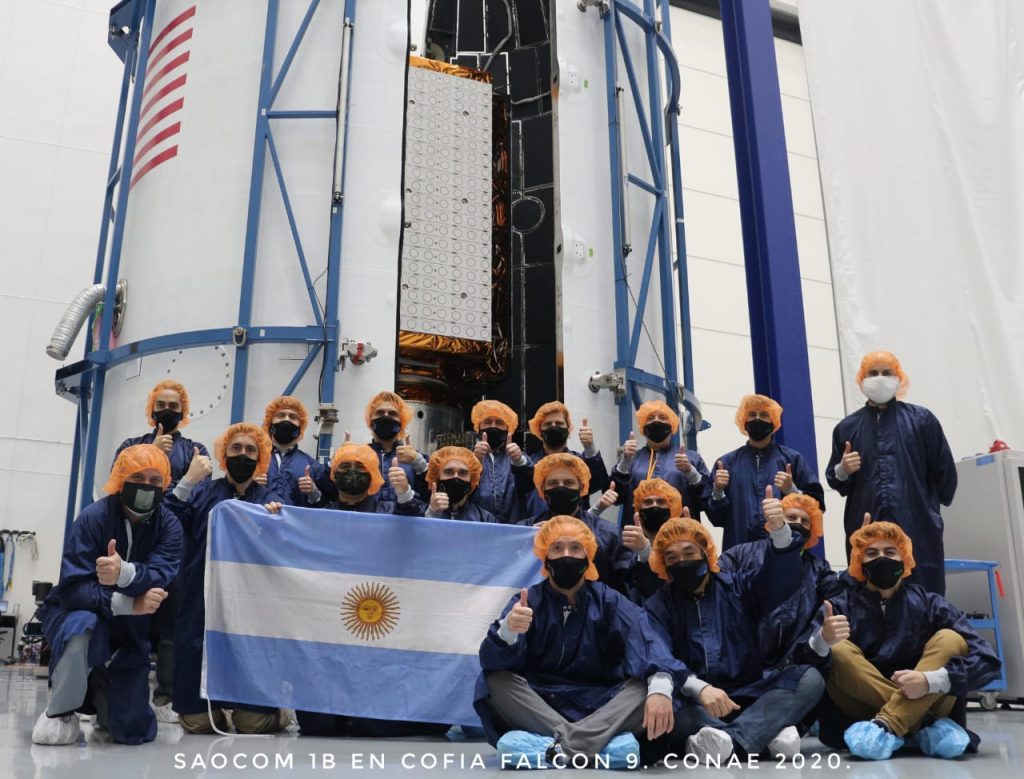
Starship SN6 Flight 1
Recent delays to SpaceX’s East Coast launches have pushed the company’s second full-scale Starship hop test to the front of the line. Starship serial number 6 (SN6) is currently scheduled to attempt its first 150m (~500 ft) hop as early as Saturday, August 29th. Coming less than four weeks after Starship SN5 became the first full-scale prototype to successfully lift off (and land) on August 4th, a second successful hop – with an entirely different Raptor engine and Starship prototype – would be an extraordinary feat.
Meanwhile, SpaceX is simultaneously inspecting and repairing the hop-proven Starship SN5 prototype – most likely with the intention of flying the ship again in the near future. According to CEO Elon Musk, SpaceX’s current goal is to perform “several” fast-paced Starship hop tests to streamline the new rocket’s launch operations. The August 29th window for SN6’s 150m hop lasts from 8am to 8pm and the rocket could attempt to lift off as early as 10am to noon.
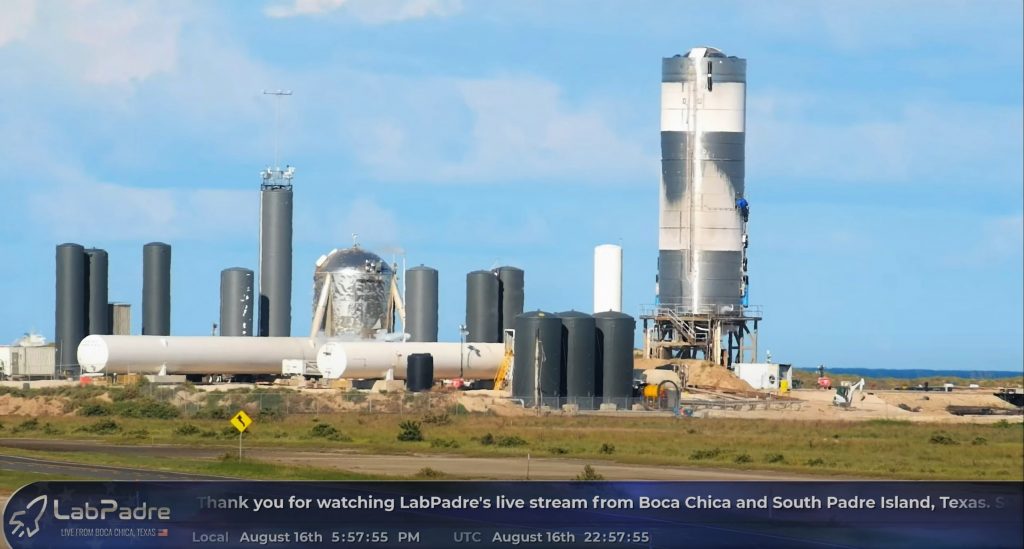
SAOCOM 1B
Sister to the SAOCOM 1A satellite SpaceX launched from California in October 2018, SAOCOM 1B is more or less identical. Notably, however, it will launch from Florida – the first polar launch planned from the US East Coast in half a century. The reason the United States effectively retired the Eastern polar launch corridor is a bizarre story of Cold War tensions gone awry but the gist is that SpaceX’s Falcon 9 rocket will ‘dogleg’ midflight, changing its trajectory to avoid overflying populated regions.
Originally scheduled to launch as early as March 30th, the Argentinian satellite has been relentlessly delayed by coronavirus-related restrictions and technical delays. SAOCOM 1B’s Falcon 9 booster was even swapped amidst the delays, switching from B1051 to B1059 as SpaceX strove to fill the gap in its manifest with internal Starlink missions. Now, NROL-44’s technical launch delays have pushed the Falcon 9 mission from August 27th to NET 7:19 pm EDT (UTC-4) on Sunday, August 30th.
SAOCOM 1B will be SpaceX’s first return-to-launch-site (RTLS) booster landing since March 2020.


Starlink-11
Finally, prior to NROL-44’s 72-hour slip, SpaceX’s 11th Starlink v1.0 mission and 12th Starlink launch overall was scheduled NET Sunday, August 30th. ULA’s delays have added considerable uncertainty, at one point pushing Starlink-11 to a tentative September 1st NET before the launch date (rather oddly) slipped back into late-August. Assuming SpaceX still has to wait for ULA, the most likely alternative is August 31st, given that August 30th would necessitate two launches in less than ten hours.
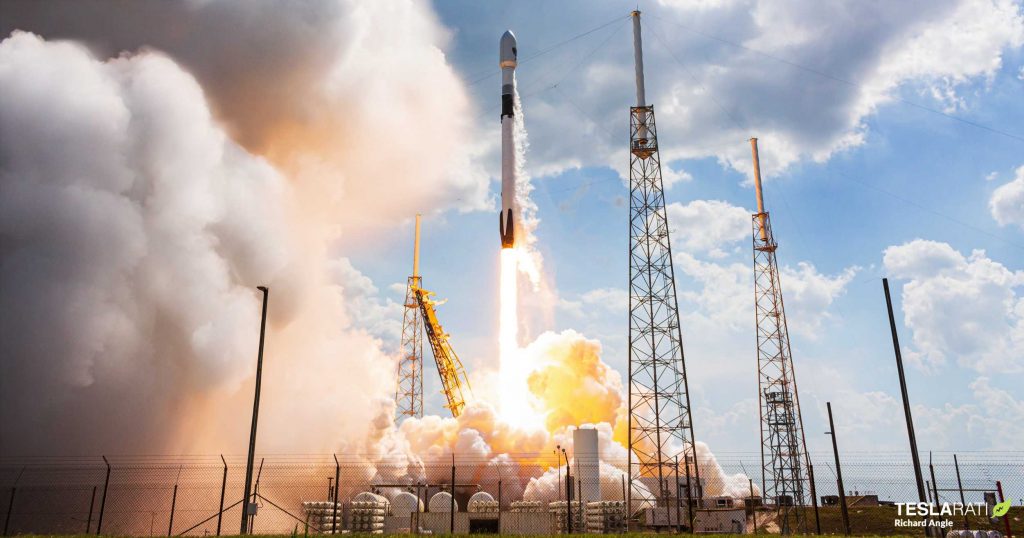
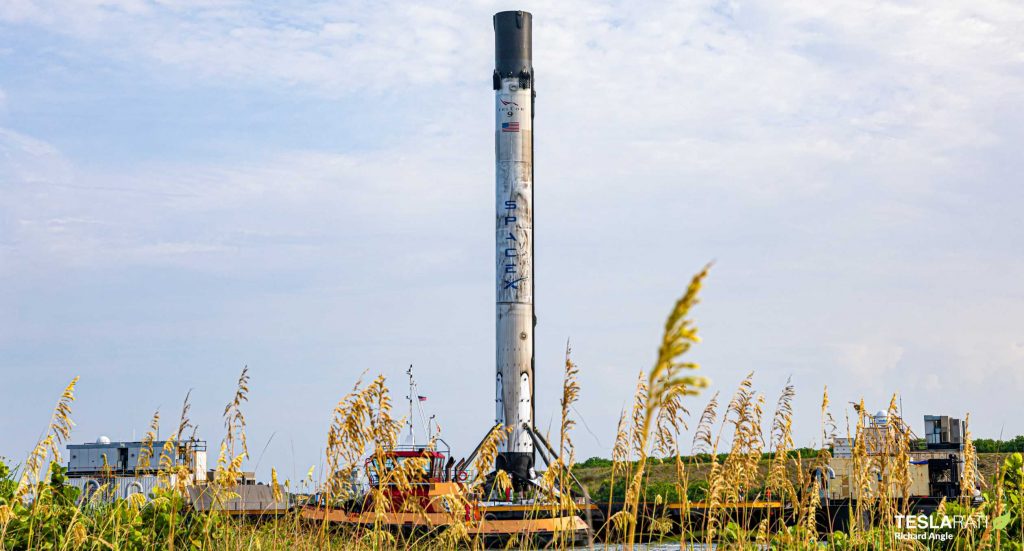
Check out Teslarati’s Marketplace! We offer Tesla accessories, including for the Tesla Cybertruck and Tesla Model 3.

Elon Musk
Tesla AI Head says future FSD feature has already partially shipped

Tesla’s Head of AI, Ashok Elluswamy, says that something that was expected with version 14.3 of the company’s Full Self-Driving platform has already partially shipped with the current build of version 14.2.
Tesla and CEO Elon Musk have teased on several occasions that reasoning will be a big piece of future Full Self-Driving builds, helping bring forth the “sentient” narrative that the company has pushed for these more advanced FSD versions.
Back in October on the Q3 Earnings Call, Musk said:
“With reasoning, it’s literally going to think about which parking spot to pick. It’ll drop you off at the entrance of the store, then go find a parking spot. It’s going to spot empty spots much better than a human. It’s going to use reasoning to solve things.”
Musk said in the same month:
“By v14.3, your car will feel like it is sentient.”
Amazingly, Tesla Full Self-Driving v14.2.2.2, which is the most recent iteration released, is very close to this sentient feeling. However, there are more things that need to be improved, and logic appears to be in the future plans to help with decision-making in general, alongside other refinements and features.
On Thursday evening, Elluswamy revealed that some of the reasoning features have already been rolled out, confirming that it has been added to navigation route changes during construction, as well as with parking options.
He added that “more and more reasoning will ship in Q1.”
🚨 Tesla’s Ashok Elluswamy reveals Nav decisions when encountering construction and parking options contain “some elements of reasoning”
More uses of reasoning will be shipped later this quarter, a big tidbit of info as we wait v14.3 https://t.co/jty8llgsKM
— TESLARATI (@Teslarati) January 9, 2026
Interestingly, parking improvements were hinted at being added in the initial rollout of v14.2 several months ago. These had not rolled out to vehicles quite yet, as they were listed under the future improvements portion of the release notes, but it appears things have already started to make their way to cars in a limited fashion.
Tesla Full Self-Driving v14.2 – Full Review, the Good and the Bad
As reasoning is more involved in more of the Full Self-Driving suite, it is likely we will see cars make better decisions in terms of routing and navigation, which is a big complaint of many owners (including me).
Additionally, the operation as a whole should be smoother and more comfortable to owners, which is hard to believe considering how good it is already. Nevertheless, there are absolutely improvements that need to be made before Tesla can introduce completely unsupervised FSD.
Elon Musk
Tesla’s Elon Musk: 10 billion miles needed for safe Unsupervised FSD
As per the CEO, roughly 10 billion miles of training data are required due to reality’s “super long tail of complexity.”

Tesla CEO Elon Musk has provided an updated estimate for the training data needed to achieve truly safe unsupervised Full Self-Driving (FSD).
As per the CEO, roughly 10 billion miles of training data are required due to reality’s “super long tail of complexity.”
10 billion miles of training data
Musk comment came as a reply to Apple and Rivian alum Paul Beisel, who posted an analysis on X about the gap between tech demonstrations and real-world products. In his post, Beisel highlighted Tesla’s data-driven lead in autonomy, and he also argued that it would not be easy for rivals to become a legitimate competitor to FSD quickly.
“The notion that someone can ‘catch up’ to this problem primarily through simulation and limited on-road exposure strikes me as deeply naive. This is not a demo problem. It is a scale, data, and iteration problem— and Tesla is already far, far down that road while others are just getting started,” Beisel wrote.
Musk responded to Beisel’s post, stating that “Roughly 10 billion miles of training data is needed to achieve safe unsupervised self-driving. Reality has a super long tail of complexity.” This is quite interesting considering that in his Master Plan Part Deux, Elon Musk estimated that worldwide regulatory approval for autonomous driving would require around 6 billion miles.
FSD’s total training miles
As 2025 came to a close, Tesla community members observed that FSD was already nearing 7 billion miles driven, with over 2.5 billion miles being from inner city roads. The 7-billion-mile mark was passed just a few days later. This suggests that Tesla is likely the company today with the most training data for its autonomous driving program.
The difficulties of achieving autonomy were referenced by Elon Musk recently, when he commented on Nvidia’s Alpamayo program. As per Musk, “they will find that it’s easy to get to 99% and then super hard to solve the long tail of the distribution.” These sentiments were echoed by Tesla VP for AI software Ashok Elluswamy, who also noted on X that “the long tail is sooo long, that most people can’t grasp it.”
News
Tesla earns top honors at MotorTrend’s SDV Innovator Awards
MotorTrend’s SDV Awards were presented during CES 2026 in Las Vegas.

Tesla emerged as one of the most recognized automakers at MotorTrend’s 2026 Software-Defined Vehicle (SDV) Innovator Awards.
As could be seen in a press release from the publication, two key Tesla employees were honored for their work on AI, autonomy, and vehicle software. MotorTrend’s SDV Awards were presented during CES 2026 in Las Vegas.
Tesla leaders and engineers recognized
The fourth annual SDV Innovator Awards celebrate pioneers and experts who are pushing the automotive industry deeper into software-driven development. Among the most notable honorees for this year was Ashok Elluswamy, Tesla’s Vice President of AI Software, who received a Pioneer Award for his role in advancing artificial intelligence and autonomy across the company’s vehicle lineup.
Tesla also secured recognition in the Expert category, with Lawson Fulton, a staff Autopilot machine learning engineer, honored for his contributions to Tesla’s driver-assistance and autonomous systems.
Tesla’s software-first strategy
While automakers like General Motors, Ford, and Rivian also received recognition, Tesla’s multiple awards stood out given the company’s outsized role in popularizing software-defined vehicles over the past decade. From frequent OTA updates to its data-driven approach to autonomy, Tesla has consistently treated vehicles as evolving software platforms rather than static products.
This has made Tesla’s vehicles very unique in their respective sectors, as they are arguably the only cars that objectively get better over time. This is especially true for vehicles that are loaded with the company’s Full Self-Driving system, which are getting progressively more intelligent and autonomous over time. The majority of Tesla’s updates to its vehicles are free as well, which is very much appreciated by customers worldwide.








